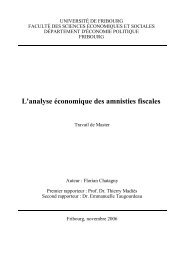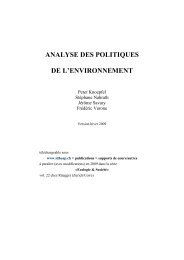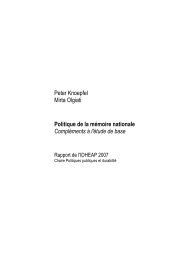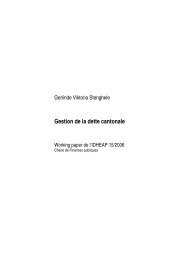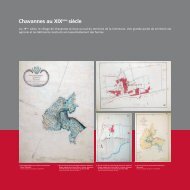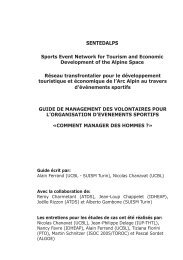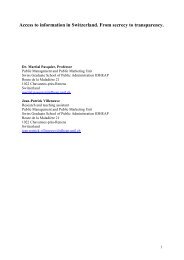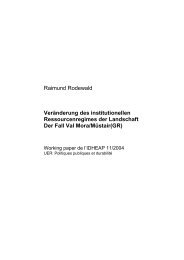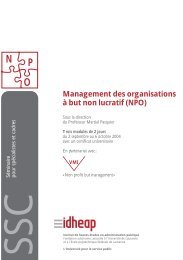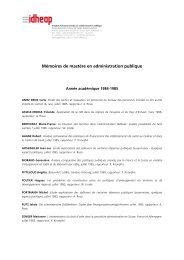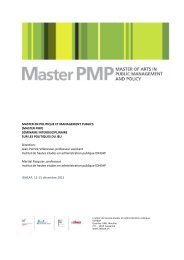Voting advice applications and party choice: evidence from ...
Voting advice applications and party choice: evidence from ...
Voting advice applications and party choice: evidence from ...
Create successful ePaper yourself
Turn your PDF publications into a flip-book with our unique Google optimized e-Paper software.
374 A. Ladner, J. Fivaz <strong>and</strong> J. Pianzola<br />
Table 2<br />
Influence of smartvote on voting decisions – Part 2 (continued)<br />
C/M ratio*<br />
Share of smartvote users (voters) influenced in their voting decisions<br />
Yes (%) No (%) N (=100%)<br />
11 59 41 1087<br />
12 60 40 2514<br />
13 72 28 1147<br />
16 68 32 1448<br />
18 62 38 407<br />
19 66 34 1453<br />
20 72 28 3376<br />
24 72 28 3941<br />
Total 67 33 16,374<br />
Source: NCCR “Democracy”, IP16 “smart-voting 2.0” (http://www.nccr-democracy.<br />
uzh.ch/research/module5/smart-voting/smart-voting)<br />
Notes: *C/M-ratio: the numerical relation between the number of c<strong>and</strong>idates (C) <strong>and</strong><br />
the number of seats (M) in a particular constituency. The higher the C/M ratio<br />
is, the more c<strong>and</strong>idates are competing against each other per seat.<br />
Indeed, Table 2 supports our assumption. The higher the C/M ratio in a constituency is,<br />
the more smartvote users were affected in their voting decisions by the voting<br />
recommendations they received.<br />
With regard to the Swiss electoral system, voters have multiple options at their<br />
disposal to express their political preferences on the ballots. Hence, voters using<br />
smartvote were also asked how, in particular, they were affected in their electoral <strong>choice</strong>s<br />
(see Table 3).<br />
Table 3<br />
Influence of smartvote on voting decisions (in percentage)<br />
Yes (%) No (%) N (=100%)<br />
Did you copy the smartvote recommendations<br />
without any changes onto your voting list?<br />
Based on the smartvote recommendations, did<br />
you vote for c<strong>and</strong>idates <strong>from</strong> different lists (votesplitting)?<br />
Based on the smartvote recommendations, did you<br />
vote for parties <strong>and</strong> c<strong>and</strong>idates that you would<br />
otherwise not have voted for?<br />
Based on the smartvote recommendations, did you<br />
abstain <strong>from</strong> voting for parties <strong>and</strong> c<strong>and</strong>idates you<br />
would otherwise have voted for?<br />
15 85 10,650<br />
61 39 10,580<br />
67 33 10,559<br />
35 65 10,372<br />
Source: NCCR “Democracy”, IP16 “smart-voting 2.0” (http://www.nccr-democracy.<br />
uzh.ch/research/module5/smart-voting/smart-voting).<br />
According to Table 3, only a small number of voters copied the voting recommendations<br />
without any changes onto their ballots. This indicates that VAAs do not produce a kind<br />
of an “instant voter” whose voting decisions are completely computer-generated without<br />
reflection on the results. In fact, the opposite seems to be the case. As we can see <strong>from</strong>



